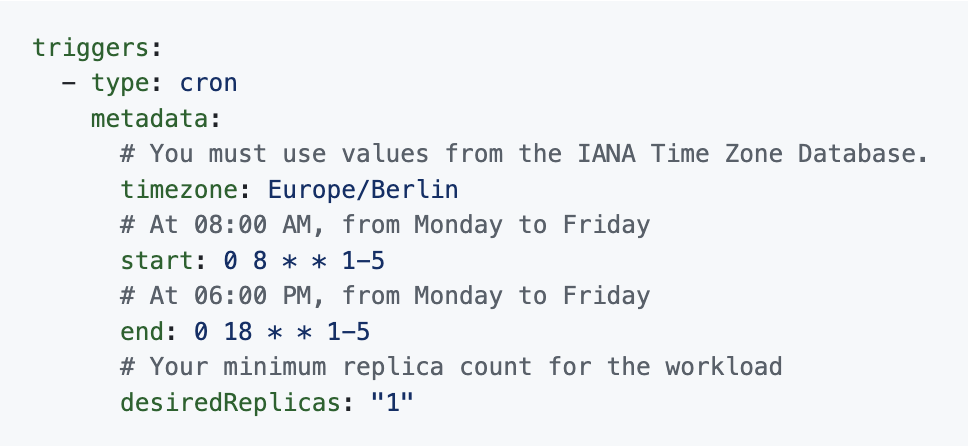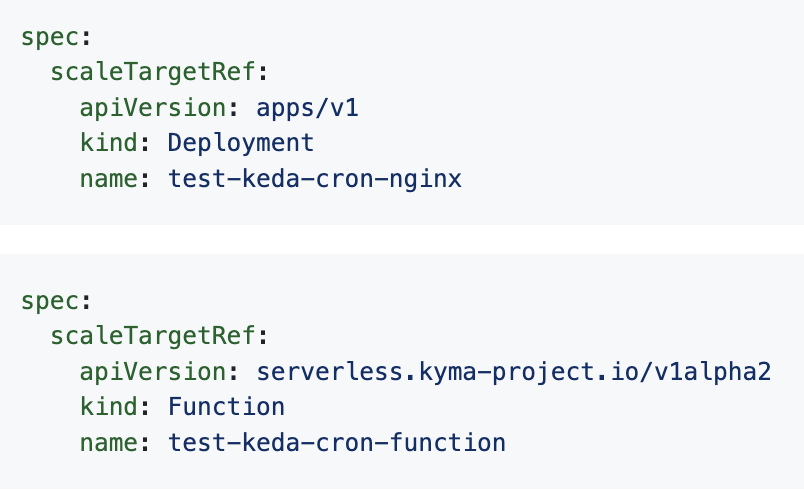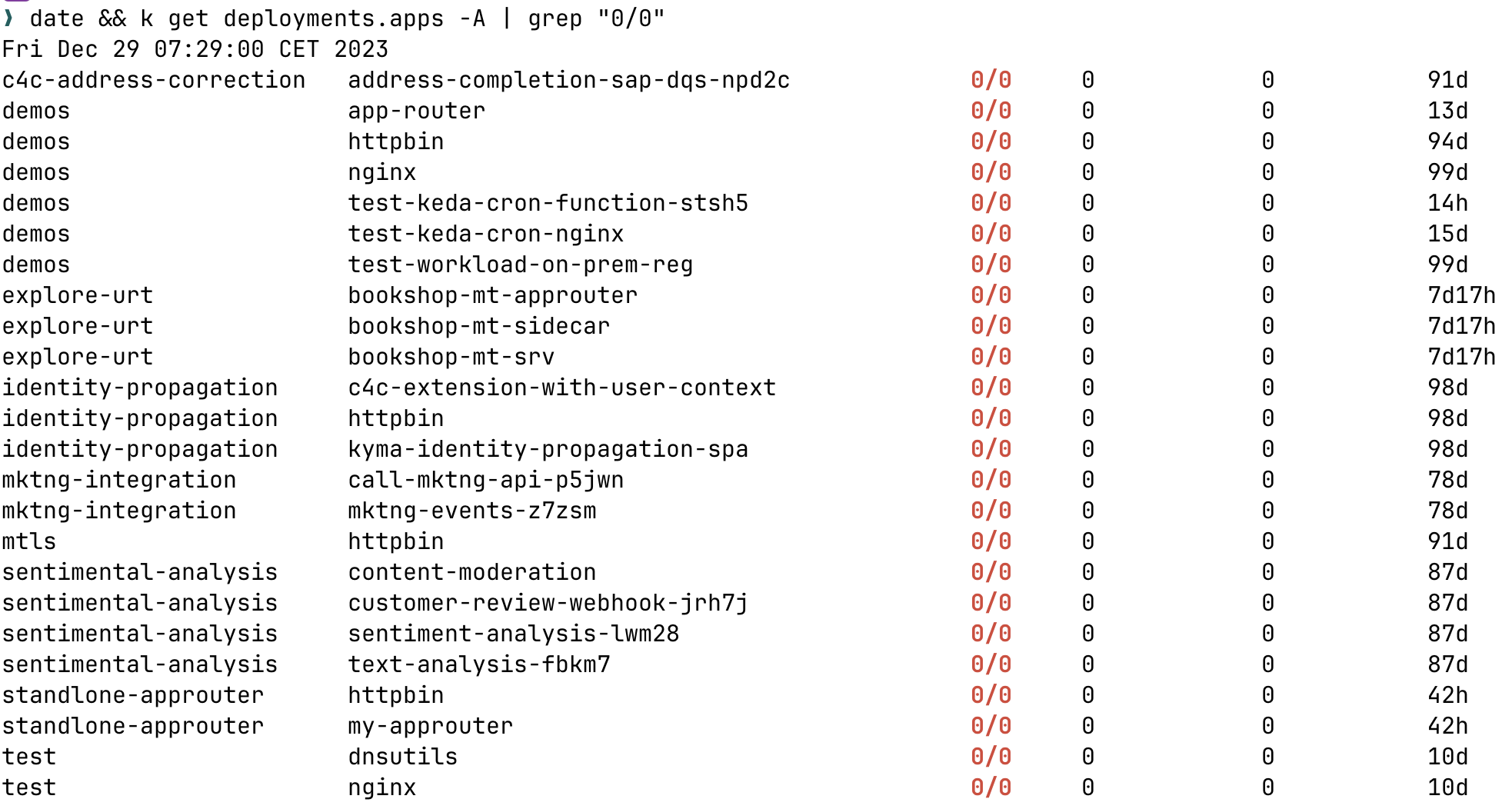
- SAP Community
- Products and Technology
- Technology
- Technology Blogs by SAP
- SAP BTP, Kyma Runtime: Leveraging KEDA module capa...
- Subscribe to RSS Feed
- Mark as New
- Mark as Read
- Bookmark
- Subscribe
- Printer Friendly Page
- Report Inappropriate Content
Introduction to KEDA
KEDA, an open-source initiative that facilitates event-driven autoscaling for Kubernetes workloads, was originally developed by Microsoft and Red Hat. It has since become a sandbox project under the Cloud Native Computing Foundation (CNCF). KEDA focuses on autoscaling applications in response to events sourced from a variety of platforms, including Kafka, RabbitMQ, and cloud-specific services such as Azure Service Bus and Google Pub/Sub.
The Benefits of KEDA
KEDA ushers in a new era of flexibility and efficiency in autoscaling. It enhances Kubernetes' capacity to support fine-grained autoscaling for event-driven workloads. Leveraging KEDA, you can dynamically scale your deployments from zero to any arbitrary number, contingent on the volume of events they are designed to process.
Activating the KEDA Module in SAP BTP Kyma Runtime
You can activate KEDA like any other module by adhering to the official guidelines on how to enable and disable a module.
KEDA's Cron-Based Scaler
KEDA offers a broad range of scaling strategies, one of which is the cron-based scaler. This scaler allows you to schedule scaling actions according to the time of day, an invaluable feature for managing predictable fluctuations in workload.
As an illustration, the cron-based scaler enables you to:
- Manage High Traffic and Request Volume Peaks: With the cron-based scaler, you can program your applications to upscale during peak hours or during high-traffic events, such as Black Friday or New Year sales. The same functionality can be used to schedule your applications to upscale during off-peak hours for batch processing tasks.

Optimize Resource Utilization and Reduce Expenses: The cron-based scaler offers a solution to optimize resource utilization and reduce costs by allowing you to schedule your applications to downscale during non-working hours. This feature is useful for your dev/stage/QA clusters, which are not required during off-working hours.
Note: This benefits when your workloads require more resources than the base setup. The current base setup consists of 3 VMs, each with 4 CPU and 16 GB of RAM. Therefore, if your workloads need 4 or more VMs to be provisioned, this feature can provide benefits to control costs and keep them to base setup during off-work hours.
Note: The cron scheduling is applicable to only customer workloads and not kyma components.

How it works
The KEDA scaledobject resource can be configured with a trigger of type cron. Within the cron scaler, you can specify that the workloads should only run during working hours.

For each type of workload, you must specify scaleTargetRef.

First-hand experience
I applied the KEDA cron scaler to all custom workloads in my Kyma cluster.
All my microservices and functions replicas were scaled down to zero.

Additionally, the number of nodes (VMs) was reduced from 4 to 3.

Sample
Check out this sample on SAP-samples/kyma-runtime-extension-samples GitHub repository. In this example, KEDA cron-based scaling is applied to both a microservice and a Kyma function.
References
- SAP Managed Tags:
- SAP BTP, Kyma runtime,
- Kyma Open Source
You must be a registered user to add a comment. If you've already registered, sign in. Otherwise, register and sign in.
-
ABAP CDS Views - CDC (Change Data Capture)
2 -
AI
1 -
Analyze Workload Data
1 -
BTP
1 -
Business and IT Integration
2 -
Business application stu
1 -
Business Technology Platform
1 -
Business Trends
1,658 -
Business Trends
93 -
CAP
1 -
cf
1 -
Cloud Foundry
1 -
Confluent
1 -
Customer COE Basics and Fundamentals
1 -
Customer COE Latest and Greatest
3 -
Customer Data Browser app
1 -
Data Analysis Tool
1 -
data migration
1 -
data transfer
1 -
Datasphere
2 -
Event Information
1,400 -
Event Information
67 -
Expert
1 -
Expert Insights
177 -
Expert Insights
301 -
General
1 -
Google cloud
1 -
Google Next'24
1 -
GraphQL
1 -
Kafka
1 -
Life at SAP
780 -
Life at SAP
13 -
Migrate your Data App
1 -
MTA
1 -
Network Performance Analysis
1 -
NodeJS
1 -
PDF
1 -
POC
1 -
Product Updates
4,577 -
Product Updates
346 -
Replication Flow
1 -
REST API
1 -
RisewithSAP
1 -
SAP BTP
1 -
SAP BTP Cloud Foundry
1 -
SAP Cloud ALM
1 -
SAP Cloud Application Programming Model
1 -
SAP Datasphere
2 -
SAP S4HANA Cloud
1 -
SAP S4HANA Migration Cockpit
1 -
Technology Updates
6,873 -
Technology Updates
430 -
Workload Fluctuations
1
- Sapphire 2024 user experience and application development sessions in Technology Blogs by SAP
- Exploring Integration Options in SAP Datasphere with the focus on using SAP extractors - Part II in Technology Blogs by SAP
- How to use AI services to translate Picklists in SAP SuccessFactors - An example in Technology Blogs by SAP
- Improving Time Management in SAP S/4HANA Cloud: A GenAI Solution in Technology Blogs by SAP
- SAP Signavio is the highest ranked Leader in the SPARK Matrix™ Digital Twin of an Organization (DTO) in Technology Blogs by SAP
| User | Count |
|---|---|
| 27 | |
| 17 | |
| 15 | |
| 13 | |
| 11 | |
| 9 | |
| 8 | |
| 8 | |
| 8 | |
| 7 |